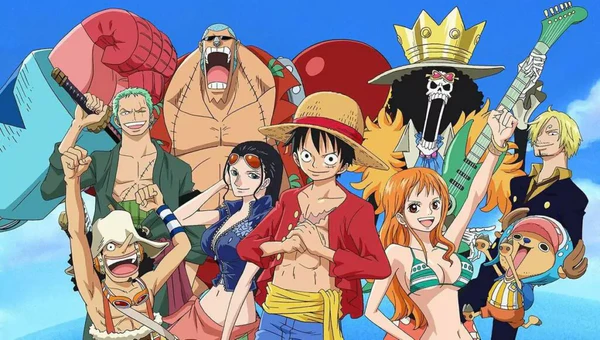Why Is Japanese Animation So Popular?
For several decades, Japanese animation has become a true global phenomenon. Whether it’s series like One Piece, Naruto, or Dragon Ball, millions of fans around the world passionately follow the adventures of their favorite heroes.
What Makes Japanese Animation So Successful?
This article explores the history, characteristics, and global impact of Japanese animation to understand its widespread popularity.

I. The History of Japanese Animation
The history of Japanese animation dates back to the 1910s and 1920s, with the birth of the first cartoon series influenced by Western productions, particularly American cartoons. However, the 1960s marked a turning point, with iconic series such as Astro Boy and Speed Racer. These classics ushered in the golden age of Japanese animation.
In subsequent decades, Japanese animation evolved and diversified:
- 1970s: The Mecha series featuring giant robots, like Mobile Suit Gundam, gained immense popularity.
- 1980s: Animation began targeting teens and young adults, with series like Saint Seiya and City Hunter.
- 1990s: Children’s animation thrived with hits like Pokémon and Digimon.
Renowned studios and directors have significantly shaped Japanese animation. Studio Ghibli, led by Hayao Miyazaki, produced masterpieces like Spirited Away. Madhouse delivered memorable series like Death Note and One Punch Man. Directors such as Mamoru Oshii (Ghost in the Shell) and Satoshi Kon (Perfect Blue) also left a lasting legacy.
II. Characteristics of Japanese Animation
Unique Visual Style and Complex Characters
One of the defining features of Japanese animation is its unique visual style. Characters often have large eyes, colorful hair, and youthful appearances. Their exaggerated expressions vividly convey emotions, adding humor or tension to scenes.
For example, protagonists like Naruto, who dreams of becoming Hokage, or Luffy, who aspires to be Pirate King, inspire viewers to pursue their own dreams with determination.
The settings in Japanese animation are equally remarkable, with intricate details creating immersive worlds.
Recurring Themes and Immersive Storytelling
Japanese animation covers many themes, often tackling profound topics such as love, death, war, and friendship. Characters frequently face dilemmas, making them relatable and emotionally compelling.
Common themes include:
- The Quest for Self: Protagonists often embark on journeys of self-discovery, reflecting on their identity and purpose.
- The Fight for Justice: Heroes fight for causes close to their hearts, leading to action-packed scenes that highlight their skills and values.
Japanese animation also excels in storytelling, often using non-linear structures, flashbacks, and perspective shifts to surprise viewers and create memorable experiences.
Music The Soul of Japanese Animation
Music plays a pivotal role in Japanese animation, enhancing the atmosphere and emotions of a series. From powerful opening themes to poignant ending songs, music creates a lasting impression.
Composers like Joe Hisaishi (Spirited Away), Yoko Kanno (Cowboy Bebop), and Hiroyuki Sawano (Attack on Titan) have gained international recognition for their contributions. These scores have become iconic, further cementing Japanese animation’s influence on global culture.
III. The Impact of Japanese Animation on Global Culture
Influence on Media and Pop Culture
Japanese animation has profoundly impacted films, television, video games, and even fashion. Popular franchises like Dragon Ball and Naruto inspire cosplay, conventions, and fan communities worldwide.
The cultural influence extends further, encouraging fans to learn the Japanese language and explore Japanese traditions through cultural exchange programs.
Critics and Controversies
Despite its widespread appeal, Japanese animation has faced criticism for perceived violence or sexual themes. Creators often clarify that their work targets diverse audiences, from children to adults, and encompasses various genres, including educational content.
Contribution to the Entertainment Industry
Japanese animation has revolutionized the global entertainment industry. Films like Spirited Away and Ghost in the Shell have succeeded critically and commercially. Moreover, video games inspired by anime, like Jump Force, allow fans to immerse themselves further into their favorite worlds.
IV. Challenges and Opportunities
As the global animation industry grows, Japanese animation faces increasing competition from other styles, such as South Korean productions like The God of High School and Tower of God.
However, technological advancements present new opportunities. Virtual and augmented reality offer immersive experiences while streaming platforms allow studios to reach global audiences effortlessly.
To remain relevant, Japanese animation must innovate while preserving its distinctive identity. Modernizing classic themes and embracing diverse storytelling can help it captivate new audiences.
Conclusion
Japanese animation has become a global cultural phenomenon thanks to its unique visual style, compelling themes, and rich storytelling. Its influence spans across generations, inspiring fans to dream, learn, and connect with diverse cultures.
As it faces new challenges and opportunities, Japanese animation continues to evolve, promising to remain a cornerstone of global entertainment for years to come.
